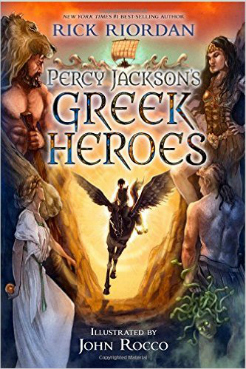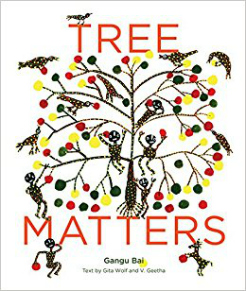Aesop Prize
 Preus, Margi. West of the Moon. New York: Amulet Books. 2014
Preus, Margi. West of the Moon. New York: Amulet Books. 2014
Inspired by her Norwegian grandmother’s journal and grounded in the folk tales collected by Asbjørnsen and Moe, Margi Preus has written an utterly unique story in which real life and folklore are intertwined. It is the story of Astri, whose mother is dead and father has immigrated to the United States to make his fortune, leaving her and her younger sister Greta at the mercy of a less than honest aunt. Astri is sold into service to the abusive farmer Svaalberd, whom she calls “the goat man.” When Svaalberd tells her his plan to marry her, Astri plots a daring escape for herself, her young sister, and the mysterious “spinning girl” she discovers living in Svaalberd’s storehouse. Astri’s life with Svaalberd the goat man is miserable and dangerous; are the stories she tells an escape for her, or is she really living in a fairy tale? There are so many elements of Norwegian folklore in this book, yet when Astri is finally on a ship heading to the United States and meets people from her home valley who can tell her what really happened in her life, it doesn’t take away from the mystery at all. On the contrary, it underscores the important role that stories play in people’s lives. There are detailed notes on the history of immigration, Norwegian folklore, and medical conditions rife at the time that informed Preus’s story.
 Riordan, Rick. Percy Jackson’s Greek Heroes. Illustrated by John Rocco. New York: Disney/Hyperion. 2015
Riordan, Rick. Percy Jackson’s Greek Heroes. Illustrated by John Rocco. New York: Disney/Hyperion. 2015
Rick Riordan creates an entertaining and enlightening retelling of twelve famous Greek myths in language and cultural references that demonstrate his mastery of humor that appeals to children. Titles like “Psyche Ninjas a Box of Beauty Cream” and “Cyrene Punches a Lion” alongside gorgeous illustrations by John Rocco hook the reader at first glance. Percy Jackson, the book’s snarky teen narrator, constantly inserts his perspectives on the historic-mythic Greek culture found in the stories through reflective asides. Often just for entertainment value, his commentary also provides some cultural context to issues contemporary children may find problematic in the myths, like gender inequality or certain cultural practices. The stories, while sprinkled with references to contemporary pop culture (Justin Timberlake, anyone?), are also liberally dosed with hints of other myths, deities, and places that heighten the sense that these stories only scratch the surface of a much more expansive mythology. Indeed, while many young readers may encounter this book linked to the rest of Riordan’s body of work, we expect that many will also find it a compelling gateway leading them gleefully deeper into Greek mythology.
Aesop Accolades
 Bai, Gangu, Geetha, V. & Wolf, Gita. Tree Matters. Tara Books Private Limited. 2014
Bai, Gangu, Geetha, V. & Wolf, Gita. Tree Matters. Tara Books Private Limited. 2014
This book is about trees in the forest, as known by and appreciated by the indigenous Bhil people of western and central India. Illustrated by a famous Bhil artist, Gangu Bai, the text is drawn from her own oral narrative, collected and shaped by V. Geetha and Gita Wolf over an extended period. Brief thematic text breaks the book into sections that cover natural history, natural resources, mythology, religion, and the role the trees of the forest play in everyday life in the region inhabited by the Bhil people. Through Bai’s artwork readers gain insight into a culture that is most likely unfamiliar to many of us, through the lens of all things tree. The non-linear narrative combined with lively artwork makes Tree Matters a visually beautiful book with a strong environmental message about living close to and respecting the earth.
 Aylesworth, Jim & McClintock Barbara. My Grandfather’s Coat. Scholastic Press. 2014.
Aylesworth, Jim & McClintock Barbara. My Grandfather’s Coat. Scholastic Press. 2014.
Jim Ayelsworth weaves the story of his own grandfather, an émigré from eastern Europe into the well-known Yiddish folksong, “I Had a Little Overcoat.” This story of thrift and family follows a coat the author’s grandfather makes for his wedding. Over the years, the coat wears out and is refashioned into a smaller articles of clothing which in turn wear out. The cycle creates a narrative rhythm as the coat gets worn out and made into a jacket, the jacket gets worn out and made into a vest, the vest into a tie, the tie into a child’s toy, and so on until nothing is left. McClintock’s lovely and crisp illustrations carry the reader through the two-generation span of the book as focusing on small but poignant moments, allowing the text to stay simple and understated. The illustrations and text focus on a life well-lived, of things well used. Despite the dissolution central to the narrative of the story, a beautiful hope emerges from this tale. Mainly, that despite the inexorable passage of time and age, and despite the uncommon durability of the coat, it is stories, ephemeral and seemingly made of nothing at all, which are the most durable. Let us hang on to those!
 Shaw, Stephanie. The Legend of the Beaver’s Tail. Ann Arbor: Sleeping Bear Press. 2015
Shaw, Stephanie. The Legend of the Beaver’s Tail. Ann Arbor: Sleeping Bear Press. 2015
This is a simple retelling of an Ojibwe legend of how Beaver, so vain about his beautiful tail, chases away his friends who are tired of his endless primping and bragging. When his tail becomes flattened in an accident, Beaver sees the error of his ways and seeks to make amends with the other animals. Beaver becomes an integral part of an ecosystem that helps his friends, Deer, Bird, and Fish. This is a lovely story and the painted illustrations are naturalistic, but still expressive and delightful. The book includes notes not just on the legend, but on the beaver’s role as a “keystone species” which helps create habitats that support many other species. As such, it is a valuable story both culturally and ecologically.